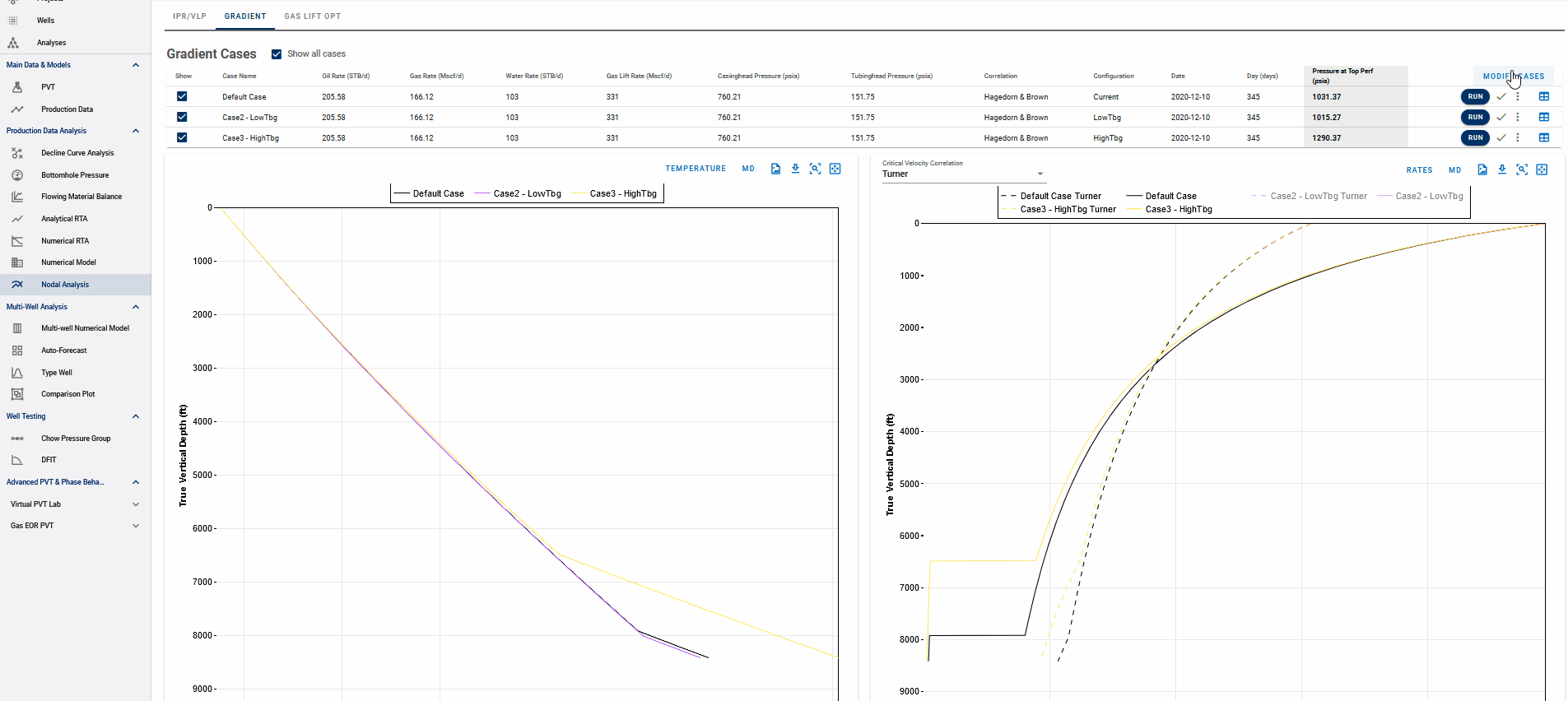Nodal Analysis - Pressure Gradient Calculator
1. Overview
This feature is used to calculate the fluid properties and approximate the pressure gradient along the well depth. This is very useful to identify high pressure drop sections for erosion, liquid loaded parts of the wellbore along with flow regime classification in the wellbore. This can also used to get infer an approximate depth for gas injection (i.e. depth at which the valve is open for injection gas) by watching the change in pressure gradient across the TVD.
2. Pressure gradient calculations in whitson+
- Step 1: Navigate to the Nodal Analysis feature and click on the Gradient tab. You will see a default case, populated already with the relevant data for the last date of production.
- Step 2: Add cases by clicking the MODIFY CASES button to the top-right of the page, as shown in the GIF below. Click save once done. Each new/edited case runs automatically. You can also rerun the case yourself by clicking the RUN button next to each case.
- Step 3: Choose a liquid loading correlation to plot for the critical velocity and critical rates vs depth plot.
- Step 4: Generated gradient curves and liquid loading plots should now be available below the case inputs.
3. Technical Features
3.1 Calculated Plots
Here are the main plots generated by this feature:
-
Pressure or temperature vs TVD or MD of the well - useful for identifying pressure gradient at different sections of the wellbore.
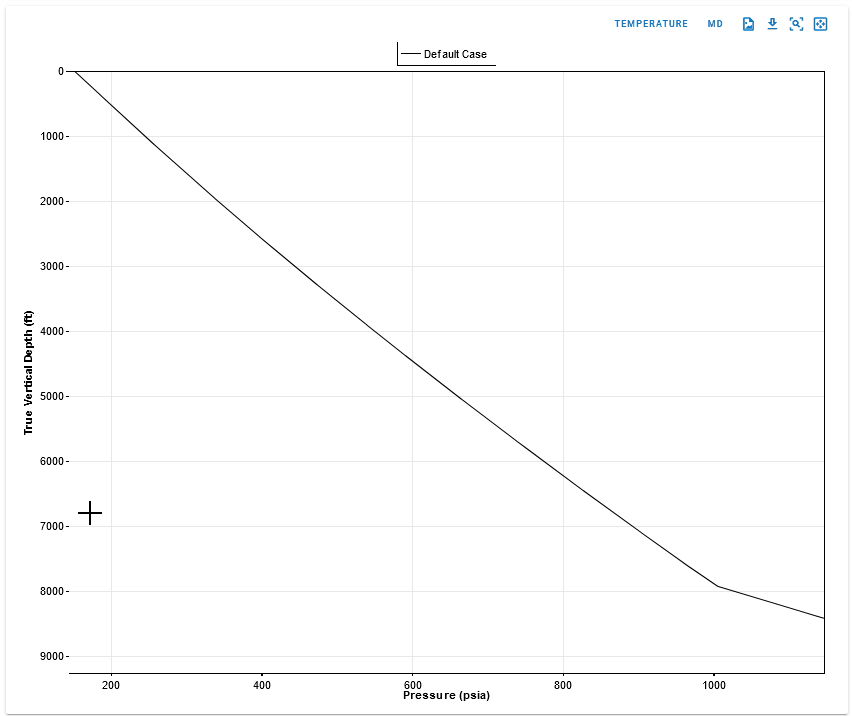
-
Superficial gas and critical gas velocity or rates from a correlation of your choice (Turner, Coleman, Nagoo, and Belfroid) vs the TVD or MD of the well - useful for identifying the liquid levels, parts of the wellbore that are liquid loaded.
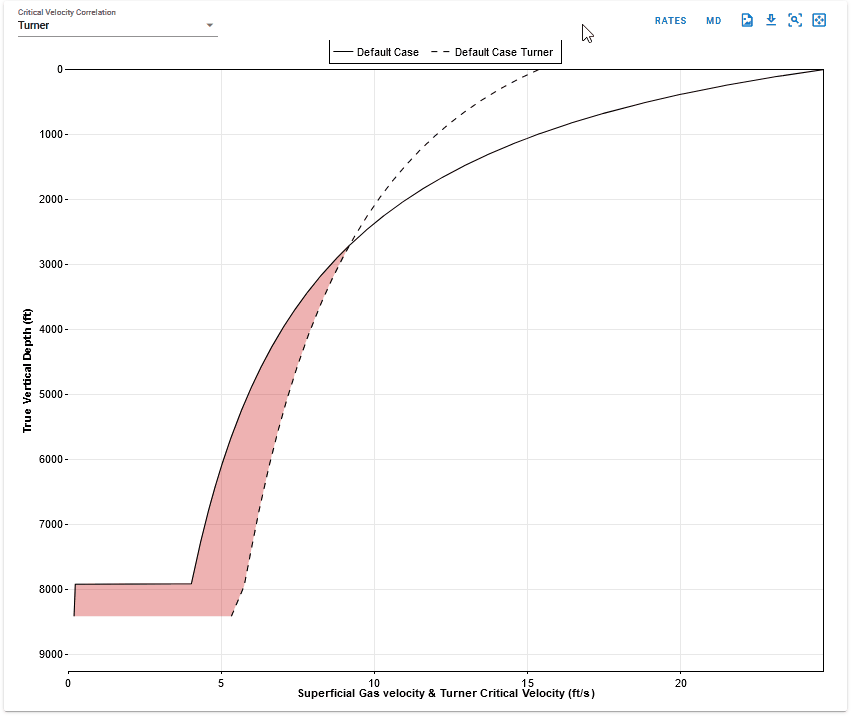
3.2 Inputs
This takes into account the following inputs, which can be adjusted by clicking the MODIFY CASES button and using the case input dialog box to edit the cases individually:
- Oil, gas and water rates along with any gas injection rates for gas lift and liquid levels for rod pumps.
- Tubing head pressure, casing head pressure and any gauge pressures if available (especially for ESP intake).
-
BHP correlation used to compute the bottomhole pressure.
All of this information can be populated quickly by clicking the calendar icon in the case inputs - directly pick a day in production history to load all the input data required to generate the gradient curves for that day. You can also edit this information in directly in the case inputs (such as adjusting the wellhead pressures for a what-if analysis).
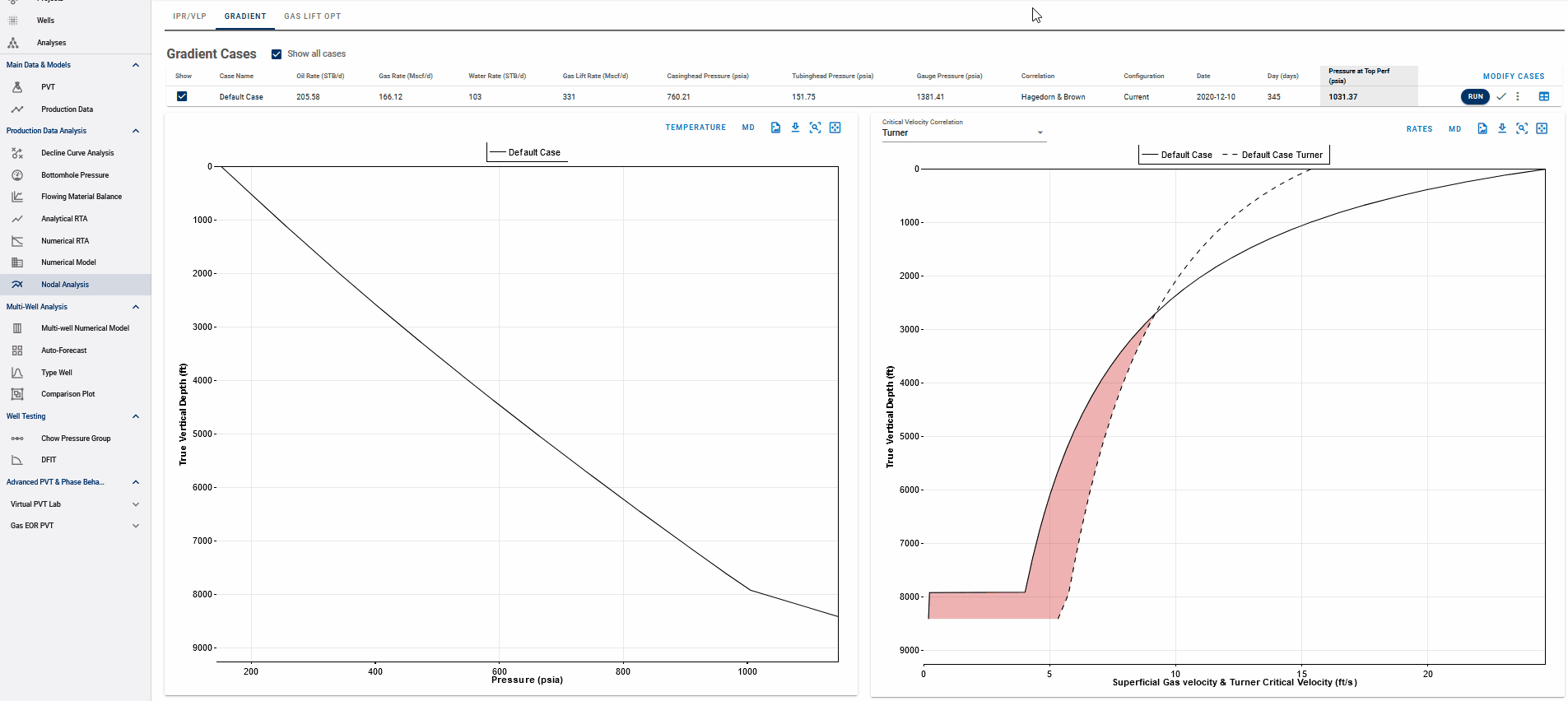
-
Current or added wellbore configuration - You can add additional wellbore configurations to test the effects of tubing depth, sizing and different artificial lift for the same production date.
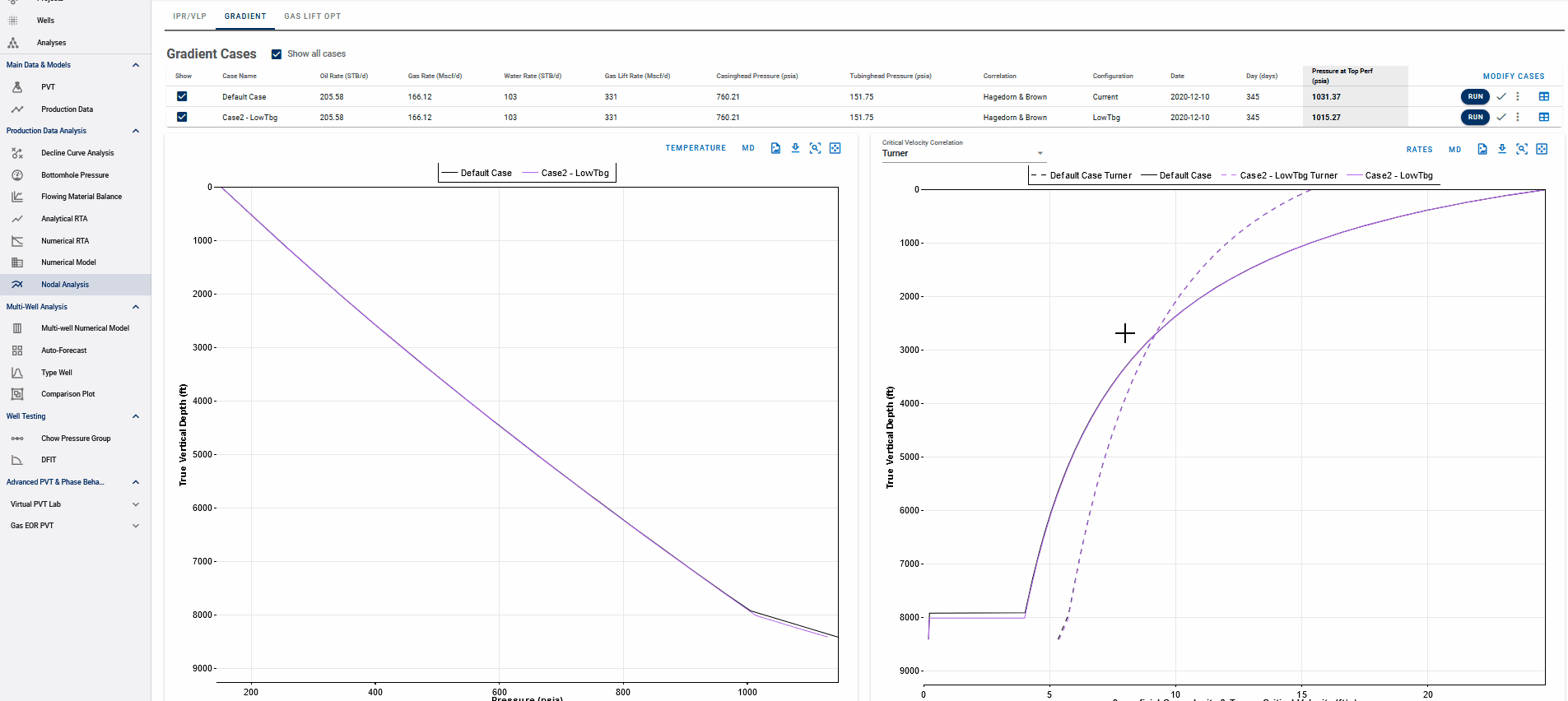
3.3 Outputs
Apart from the main plots generated from setting up the cases, this feature can output the following information in tabular form for every 10 feet of measured depth:
- The pressure and temperature.
- Superficial gas, liquid and mixture velocities and rates and all critical rate and critical velocity correlation results.
- Oil, Gas, Water, Liquid and Mixture densities and viscosities.
- Interfacial tension: Oil-gas, water-gas, liquid-gas.
- Two-phase flow regimes in the pipe.
You can access this table by clicking the 'extended gradient results' button in the same row as the case, available to the right, for each case.
4. Example
Here's an example, showing how to add a case simulating an increased gas injection rate and generating extended gradient results vs depth:
